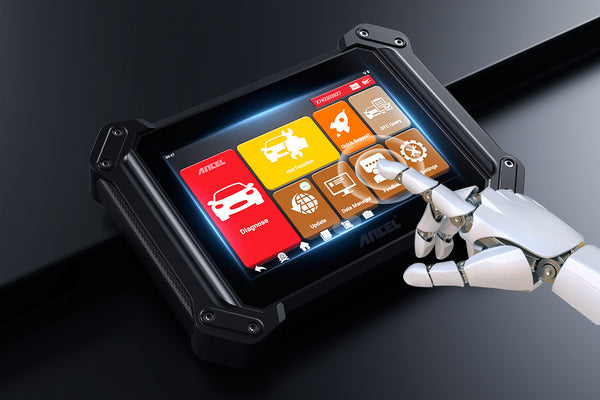It is a great privilege as a vehicle owner to understand how to read your onboard diagnostics. Having this knowledge helps you to detect issues with your vehicle early.
Some issues you can readily identify when you understand OBD codes include faulty sensors, engine misfires, and emission-related issues. Knowing how to detect issues with your vehicle early prevents repairs from going to the costly margins.
Understanding and decoding onboard diagnostics reader safeguards the health of your vehicle, ensuring optimum performance. The ability to interpret the information provided opens you up to connecting with your vehicle deeper and quickly identifying underperformance, power output, fuel inefficiencies, and other critical issues that are often overlooked.
In this article, we aim to provide insight into how to accurately interpret an onboard diagnostic reader to ensure improved vehicle reliability, safety, and overall performance.
Related Reading: How to Read Code on Car
What is Onboard Diagnostics?
On-board diagnostics is a built-in automotive system that monitors the total performance and health of a vehicle’s engine and emissions control system. Their main mode of operation is to detect and report faults or abnormalities of the vehicle owner or mechanic.
Over the years, OBD systems and standards have developed and surely have kept up with the many advancements in automotive technology. In modern vehicles, OBD readers play a crucial role which is to provide real-time data about a vehicle’s operation and performance.
Mechanics use OBD systems to pinpoint and effectively troubleshoot issues, perform emissions testing, and comply with environmental regulations. OBD also facilitates remote monitoring and fleet management solutions.

How the OBD System Works
Diagnostic trouble codes are alphanumeric codes generated by the On-Board Diagnostics when the vehicle’s components or systems detect a problem. Each code has a standardized meaning and is used to identify and diagnose issues with the vehicle accordingly.
The OBD system, after detecting the fault, stores a corresponding DTC in its memory which is then possibly followed by illuminating the vehicle’s malfunction indicator light (MIL), commonly referred to as the “check engine light.” Automotive mechanics then move on to using specialized diagnostic tools to retrieve the noted codes from the vehicle’s OBD system.
DTCs provide valuable information about the nature and location of a problem within the vehicle. They help technicians pinpoint the issue more quickly and accurately, leading to faster repairs and reduced downtime. Additionally, DTCs facilitate communication between different diagnostic tools and equipment, ensuring compatibility across various makes and models of vehicles.

Reading OBD Codes Step by Step
When setting out to read your OBD codes, you first want to ensure you know how to locate the OBD2 port for your vehicle. The OBD-II port can usually be found on the driver’s side of the vehicle under the dashboard. Oftentimes when found, it is covered by plastic which is safe and easy to remove. You’ll then need to look for the pin connector that matches the shape of your diagnostic tool connector.
The next step is to securely connect your onboard diagnostic reader or automotive diagnostic scanner. Following this, turn on the vehicle's ignition to initiate the scanning process and navigate accordingly based on the instructions provided in the manual. You should be able to see a ‘scan’ or ‘read codes’ option to select. Some vehicles may not need the engine to be turned on depending on the diagnostic tool.
Now that you have successfully connected your diagnostic tool and initiated the scan process, the retrieved DTCs from your diagnostic tool will now be present on the screen of your tool. To interpret the DTCs accurately, be sure to check the user manual of your diagnostic tool or follow a reference guide. The codes are normally displayed with a letter and four numbers that point to the specific problem by the OBD system. It's critical to follow these steps to ensure accurate reading of OBD codes and diagnosis of issues with your vehicle.
What better way to learn to read your onboard diagnostics than with a brand that offers only efficiency - that's ANCEL! ANCEL is a company you can trust, ensuring that you and your family receive nothing less than the ultimate cost-effectiveness.

The ANCEL X6 is an OBD-II automotive diagnostic scanner professional all system code reader. It is one of the top performing systems featuring full OBD-II functions, 10 Hot Reset Services(oil reset, EPB service, ABS Bleeding, SAS reset, BMS service, TPMS service, DPF service, IMMO service, Injector coding, and TPS Throttle Adaption), Bi-directional Control Function (Active Test) and 2 years free update. The ANCEL X6 can provide an all-system diagnosis by reading and clearing all major system trouble codes.
The ANCEL HD601 is the ultimate enhanced heavy-duty truck OBD-II/HDOBD Diagnostic Scanner Tool. This all-system code reader is a 2-in-1 diesel and car scanner with 6-pin, 9-pin, and 12-pin connectors, powerful OBD functions, extensive truck coverage, and lifetime free update. The ANCEL HD601 is ideal for professional mechanics, home-use customers, beginners, and DIY enthusiasts.
This handheld device is compatible with the majority of American trucks and cars. It can also provide quick and easy access to the electronic control units of your vehicle. Lastly, it is known best for its functions like reading and clearing the error codes, displaying freeze frame data, live graph data like engine speed, requesting vehicle information, and providing the requisite DTC lookup functionalities.
Diesel Code Readers: Specifics for Diesel Engines
It is essential to have a specialized code reader for diesel vehicles for many reasons with the main one being that the operating characteristics and emissions control systems are different in comparison to the engines governed by gasoline. Diesel code readers are specially designed to interpret and diagnose issues fitting to the diesel engines to ensure accurate troubleshooting.
Also, based on the nature of diesel engines the communication of protocols/sensors in comparison to gasoline vehicles is different and requires specific tools to retrieve and effectively interpret the data.
A diesel code reader should possess compatibility, meaning diesel code readers should be compatible with diesel vehicles' communication protocols. There should be diesel-specific parameters as these support diagnostic functions tailored to diesel engine systems, such as turbochargers, fuel injection systems, and exhaust aftertreatment systems.
Live data monitoring is also another key feature and this speaks to the ability to monitor data from diesel engine sensors in real-time which helps with diagnosing performance issues. Diesel code readers should be able to gather and interpret diesel-specific Diagnostic Trouble Codes (DTCs) to pinpoint engine faults accurately.
Some diesel code readers feature enhanced diagnostic capabilities such as cylinder balance tests, injector coding, or DPF regeneration control.
How to Interpret Diesel-Specific DTCs
Diesel-specific DTCs may have similar formats to those for gasoline engines (a letter followed by four numbers) but instead will indicate issues specific to diesel engine components or systems.
It is always advised, regardless of how knowledgeable you are, to refer to the user manual of your diesel code reader or a comprehensive diesel engine diagnostic guide to ensure you have the correct meaning and potential causes of specific DTCs. Depending on the diesel code reader, it may provide additional information or troubleshooting tips for interpreting and addressing diesel-specific DTCs.
Using specialized diesel code readers is wise as it ensures accurate diagnosis and troubleshooting of issues specific to diesel engines, helping maintain optimal performance and efficiency.
Final Thoughts
Onboard Diagnostics systems are essential for cars/trucks as they aid in monitoring and diagnosing vehicle issues. Understanding how to connect your onboard diagnostic tool and read OBD codes allows vehicle owners to detect problems early, save money on mechanic fees and labor costs, and improve vehicle performance and reliability.
FAQs
How do I read OBD diagnostic trouble codes (DTCs)?
Each DTC consists of an alphanumeric code meaning a mixture of a letter along with numbers. It generally also has a brief description of the problem detected. You can read these codes by referring to the tool’s user manual or online resources. Additionally, some diagnostic tools provide explanations directly on the screen.
Can I fix issues indicated by OBD codes myself?
It depends on the complexity of the problem presented. Some minor issues such as a loose gas cap or a faulty sensor are quite straightforward. However, more complex issues may require professional mechanic diagnosis and repair.
Do I have to handle OBD codes immediately?
Promptly dealing with OBD codes helps prevent further damage to your vehicle and ensures overall continued reliability and safety. Ignoring OBD codes can lead to more severe problems and potentially costly repairs down the line.















